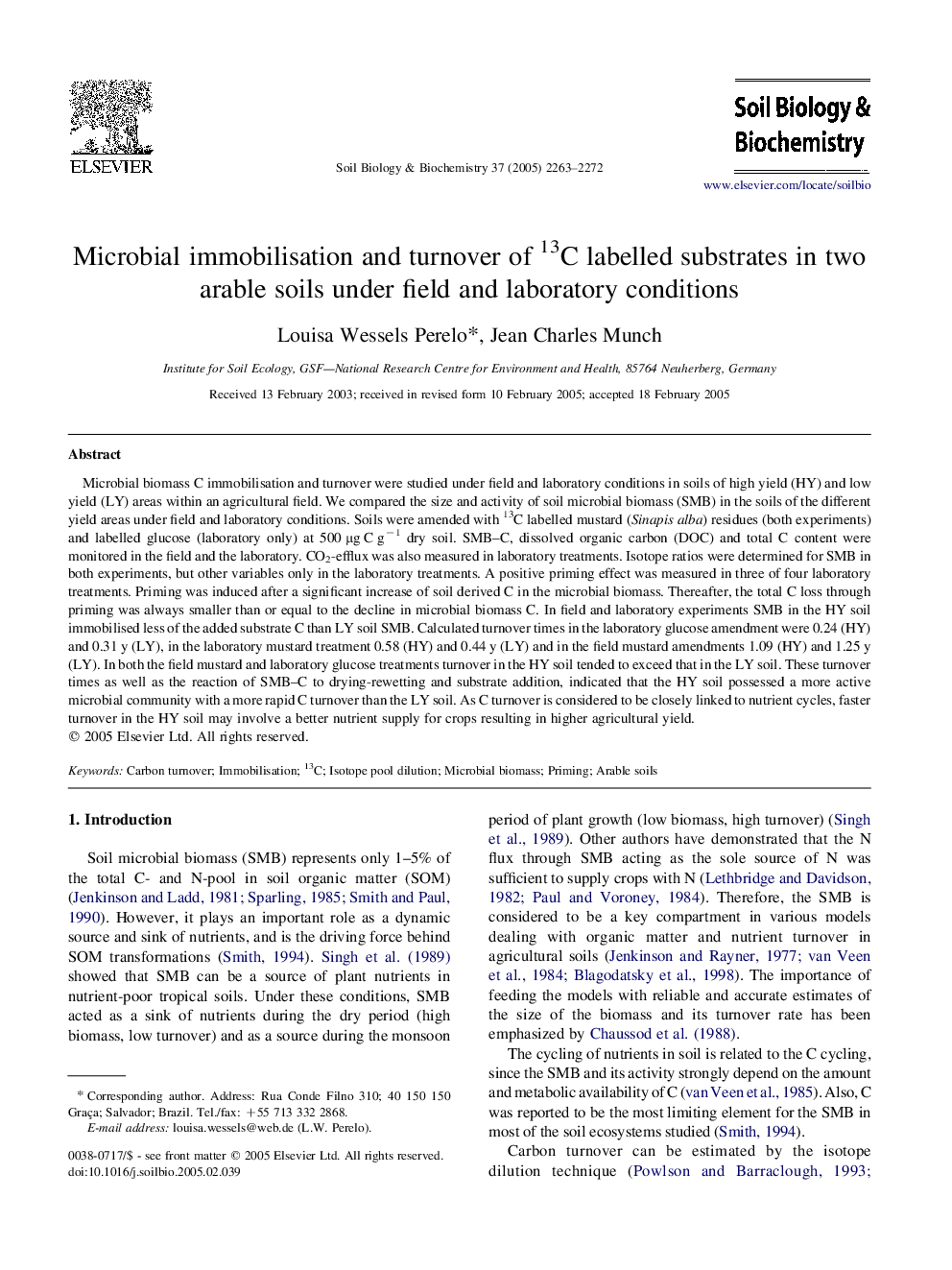| کد مقاله | کد نشریه | سال انتشار | مقاله انگلیسی | نسخه تمام متن |
|---|---|---|---|---|
| 2026508 | 1070032 | 2005 | 10 صفحه PDF | دانلود رایگان |

Microbial biomass C immobilisation and turnover were studied under field and laboratory conditions in soils of high yield (HY) and low yield (LY) areas within an agricultural field. We compared the size and activity of soil microbial biomass (SMB) in the soils of the different yield areas under field and laboratory conditions. Soils were amended with 13C labelled mustard (Sinapis alba) residues (both experiments) and labelled glucose (laboratory only) at 500 μg C g−1 dry soil. SMB–C, dissolved organic carbon (DOC) and total C content were monitored in the field and the laboratory. CO2-efflux was also measured in laboratory treatments. Isotope ratios were determined for SMB in both experiments, but other variables only in the laboratory treatments. A positive priming effect was measured in three of four laboratory treatments. Priming was induced after a significant increase of soil derived C in the microbial biomass. Thereafter, the total C loss through priming was always smaller than or equal to the decline in microbial biomass C. In field and laboratory experiments SMB in the HY soil immobilised less of the added substrate C than LY soil SMB. Calculated turnover times in the laboratory glucose amendment were 0.24 (HY) and 0.31 y (LY), in the laboratory mustard treatment 0.58 (HY) and 0.44 y (LY) and in the field mustard amendments 1.09 (HY) and 1.25 y (LY). In both the field mustard and laboratory glucose treatments turnover in the HY soil tended to exceed that in the LY soil. These turnover times as well as the reaction of SMB–C to drying-rewetting and substrate addition, indicated that the HY soil possessed a more active microbial community with a more rapid C turnover than the LY soil. As C turnover is considered to be closely linked to nutrient cycles, faster turnover in the HY soil may involve a better nutrient supply for crops resulting in higher agricultural yield.
Journal: Soil Biology and Biochemistry - Volume 37, Issue 12, December 2005, Pages 2263–2272